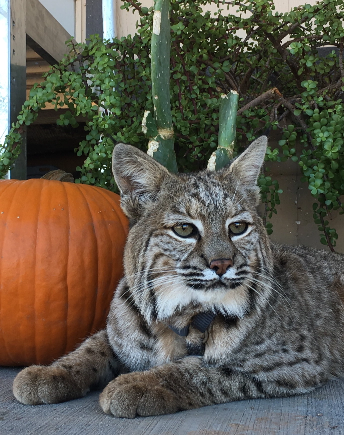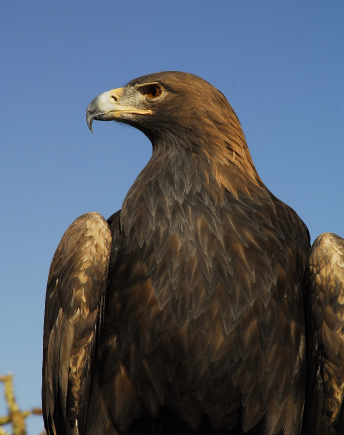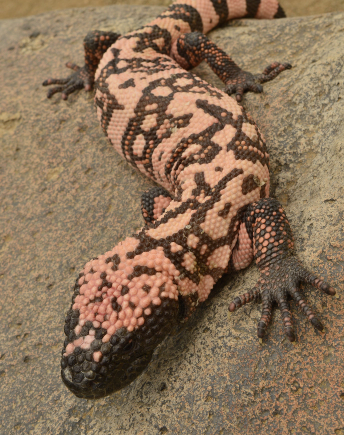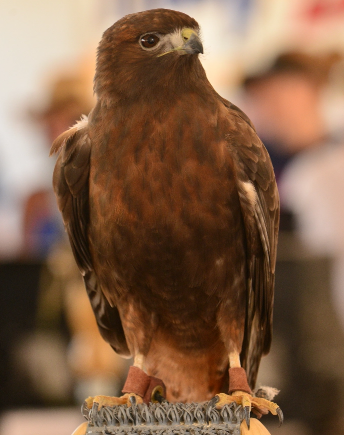AZGFD Animal Ambassadors
If you see a wild animal all alone, it’s easy to believe that this animal needs your help. But in most cases, its parents are likely nearby, and in most situations, human intervention actually does more harm than good. Wildlife reared in captivity or babies raised without the benefit of learning from their parents have a reduced chance of survival when and if they are released back into the wild. However, in the hands of an experienced and qualified rehabilitation expert, animals have a better chance of retaining their survival skills and being returned safely to the wild. For many that survive but become non-releasable, great care is taken to find them a permanent home. Some become Arizona Game and Fish Department Ambassadors, helping us educate others about the importance of conserving and protecting Arizona’s wildlife.
For more information on what to do if you encounter abandoned or injured wildlife, click here.
Hunter
SPECIES: BOBCAT
AGE: DOB MARCH 2009
SEX: MALE
Hunter was found as a kitten, hidden behind pallets of blocks on a construction site near Casa Grande. Mom was nowhere to be found, and sadly Hunter’s two siblings did not survive. The well-meaning person who found Hunter decided to keep and raise him, resulting in him becoming habituated to humans and never having a chance to learn survival skills such as hunting and predator avoidance. Unfortunately, this meant Hunter could never safely return back to the wild.
Hunter has been one of our animal ambassadors for many years, and he helps us teach the public about native wildlife.

Maggie
SPECIES: GOlDEN EAGLE
AGE: DOB EST. SPRING 2004
SEX: FEMALE
This gorgeous eagle was feeding on roadkill along the I-40 near Williams and unfortunately flew up into a passing semi-truck. At first, the Wildlife Center staff believe she had minor injuries and feather damage. But as she healed and was re-trained to hunt with the hopes of returning her to the wild, they discovered a much more serious injury—Maggie was blind in one eye. As she tried to hunt live prey, her lack of depth perception was an issue – a problem that would not allow her to survive in the wild.

Stubby
SPECIES: GILA MONSTER
AGE: ABOUT 20
SEX: MALE
Stubby was run over while trying to cross a paved road in Phoenix. Though gila monsters are known to be venomous, a concerned motorist captured the injured lizard and brought him to our Wildlife Center. Sadly, Stubby lost half of his tail as a result of the trauma—and that’s how he got his name. This may not seem like a terrible injury, but Gila monsters actually store fat in their tales. Without it, Stubby would likely have starved if returned to the wild.

Tesla
SPECIES: RED-TAILED HAWK
AGE: DOB EST. SPRING 2006
SEX: MALE
Tesla had an unfortunate interaction with overhead power lines, resulting in him being electrocuted. This traumatic injury caused severe damage to some of the tissue and bone on his right wing, leaving the Wildlife Center no choice but to amputate part of the wing. Without the ability to fly, Tesla lives permanently at our Wildlife Center and has become one of our most popular ambassadors.
